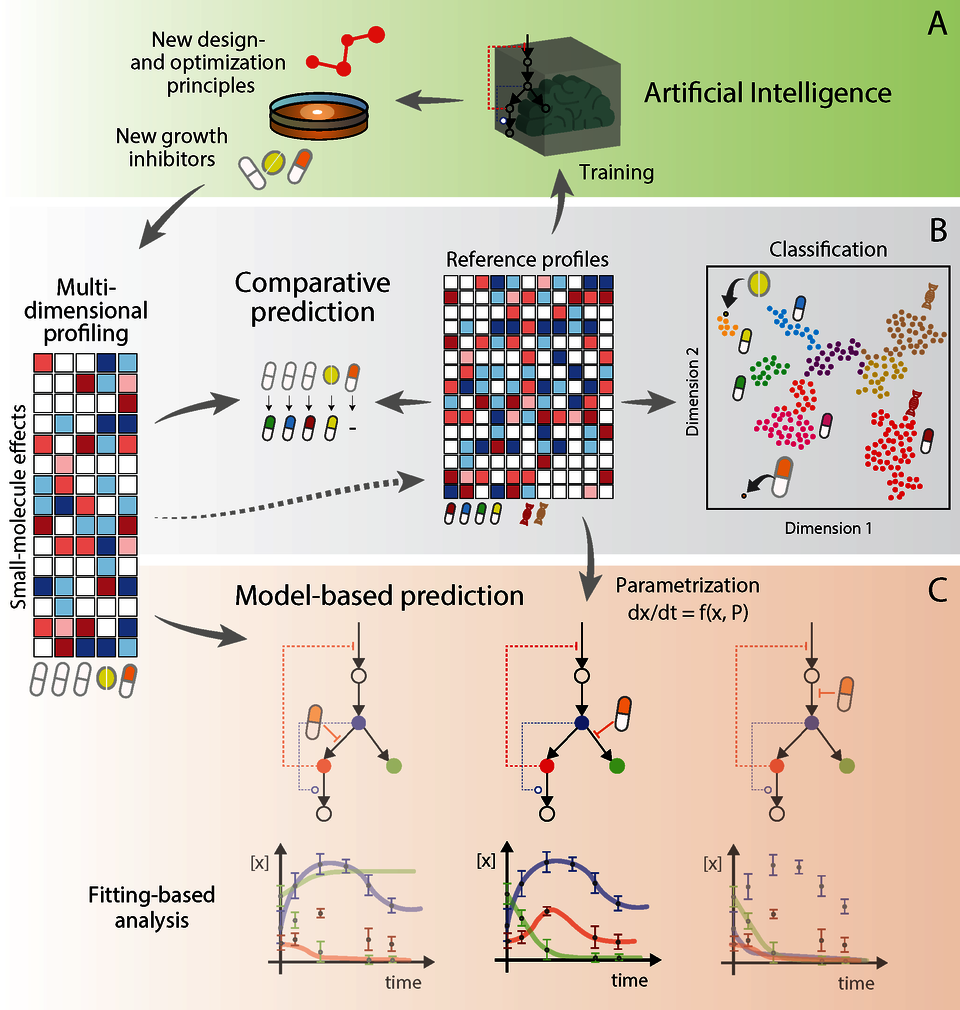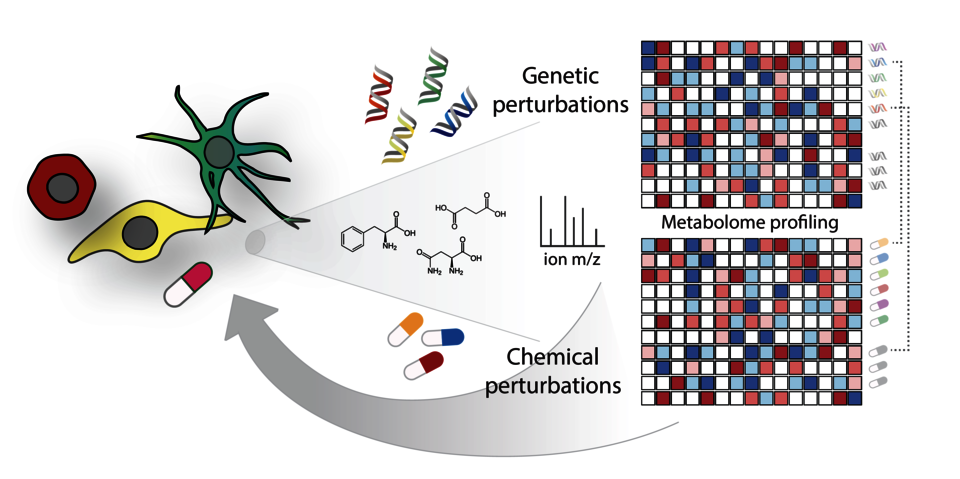Metabolomics . Computational Biology . Systems Pharmacology . Systems Biology . Cancer Metabolism . Microbial Metabolism
Systems Pharmacology and Biology of Metabolism
Functional aspects of microbial and cancer metabolism in mediating drug response are at the core of our research. The mission of the group is to understand fundamental mechanisms regulating short- and long-term metabolic adaptation to genetic and chemical perturbations to find new and unconventional therapeutic strategies, ranging from antibacterial to anticancer drugs. To this end, we develop new ways to combine state-of-the-art technologies in metabolomics with mathematical modeling. An innovative contribution of our experimental and theoretical work is the establishment of a new perspective and methodology to search for new drug mechanisms of action and ways to bypass drug resistance. To this end, we develop novel quantitative experimental-computational approaches to shed light on the interplay between cell metabolism and drug treatment.
Our research has been funded by grants from the Worldwide Cancer Research foundation, Krebsliga, the Novartis foundation, the National Cancer Institute, the Swiss Scientific Exchange Programme, SNF, ETH and NIH.
Dissecting short- and long-term metabolic adaptation to drug treatment
While much progress has been made in systematically mapping the genetic networks of mutations conferring drug resistance, very little is known about the rewiring of metabolism in resistant mutants and even less on the constraints imposed by metabolism on the evolution ofdrug resistance and compensatory mechanisms. The Zampieri lab aims at: (i) understanding the role of metabolism in mediating the early adaptive response of bacteria and cancer cells to small molecules and (ii) investigate the synergy between natural selection of resistance mutations and the nutrient composition of the environment.
New tools to explore dynamic adaptive responses to endogenous and exogenous perturbations
In recent years, omics technologies (e.g. phospho-proteomics, proteomics, transcriptomics, metabolomics …) has become a special focus in many branches of biology, requiring biologists to apply quantitative methods and theoretical scientists to acquire a deeper understanding ofwhere the data come from. Overall, advancements in high-throughput omics technologies came along with the need for new tools to analyze and interpret the large amount of generated data. Zampieri Lab researchers are working to find new ways of integrating large datasets which span different time domains and many regulatory layers. The development of integrated and innovative computational and experimental systems-level approaches plays an essential role in our mission to understand the decision making process of cells upon drug treatment.
Metabolic fingerprinting of drug modes of action
Innovative paradigms in the search of alternative ways to fight cancer and bacterial infections are deemed. To widen the scope of treatment and to overcome drug resistance, there is an urgent need for new anticancer and antibacterial compounds that combine broad therapeutic potential and novel modes of action. To this end, we develop new in silico approaches and rapid metabolome profiling strategy to perform high throughput functional characterization of bioactive compounds and rationally design combination therapies.
From aberrant gene regulation to rewiring of metabolism in cancer.
By integrating cross-sectional omics data from diverse tumor cell lines, we construct global network models across different levels of biological information: transcriptome, proteome and metabolome. By exploiting the naturally-occurring variation caused by the genetic and tissue diversity observed in an in vitro cell line system, and with the aid of gene-regulatory networksand mathematical models, we investigate the information flow from transcription factors to metabolic pathways and vice versa. Our mission is to develop unique integrative models to: (i) predict the functionality and role of mutations in driving and/or sustaining high proliferation of cancer cells, (ii) disentangle the role of transcriptional and post-translational regulation in the emergence of dysregulated metabolism (iii) systematically characterize and understand the specialization of cancer metabolism for consumption of specific nutrients and their functional role in fuelling different metabolic processes, (iii) reveal potential weaknesses inherent to aberrant cancer metabolism.
Student projects
Our lab continuously offers a variety of computational and wet lab projects. If you are interested in conducting your semester or master project in our lab, just write us an email.
Figure 1: Metabolite coverage of flow injection TOF-MS analysis in mammalian cell lines. Schematic representation of the human metabolic network highlights most representative identifiable metabolites in mammalian cell lines (red dots).

Figure 2: Computational extraction of functional insights from multidimensional profiles of small-molecule effects. A) Artificial intelligence algorithms for the in silico discovery of new and yet to be profiled antibacterials use multidimensional profiling data to train and improve interpretability, unraveling new principles guiding compound optimization and development. B) Profiles of uncharacterized molecules are compared to antibacterials with an already known Mode of Action (MoA) or with genetic perturbations, such as gene knockout, knockdown or overexpression. Such comparative analysis enables the systematic functional annotation of compounds and their classification in already known classes of antimicrobials or as potential new and unconventional antibacterials. C) Frameworks for the de novo prediction of MoAs integrate molecular profiles and a priori knowledge in mechanistic or probabilistic models of genetic and/or biochemical networks to simulate different possible scenarios, such as the effects of inhibiting different drug targets. Model-based simulations are compared to experimental data to find the most plausible parameters and drug targets.

